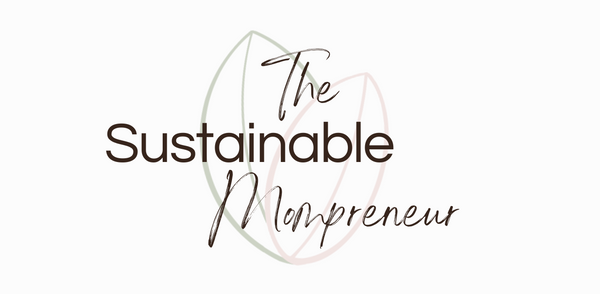FAQs
1. What is Sustainable Mompreneurs definition of “Natural”?
The word “Natural” is a rather vague term when used to describe products. There is no governing body or list of criteria to define what ingredients or products are natural. Each person must decide for themselves what the term natural means to them. When you see the term “all-natural” used to describe our products, there are two types of natural ingredients you may see included in these products.
- Pure, Raw Materials: Ingredients obtained from nature that may go through minimal, physical processing, but are chemically the same as when they are harvested.
Examples: Beeswax, Honey, Clays
Processing: Cleaning, Minimal Refining
- Naturally Derived: Ingredients that are sourced from nature, and once the raw materials are harvested, they are subjected to certain processes which change the chemical structure of the ingredient. Start as Raw Materials, then undergo a chemical reaction that turns them into the functional ingredient that is used.
Examples: Preservatives, Emulsifiers
Processing: Fermentation, Hydrolysis
- Nature Identical: Ingredients that are created in a lab, but are molecularly identical to the ingredient when it is found in nature.
Example: Citric Acid
2. Are Synthetic Ingredients Unsafe?
This topic comes up often when speaking of the differences between natural and synthetic ingredients. The truth is, not all synthetic materials are unsafe, just as not all natural materials are safe. For example, lead is an all-natural material, but is very unsafe. On the flip side, silicones are synthetic, but they have been proven to be safe for use.
So why choose only natural ingredients for our products? Simple. They enhance our well-being in more than one way. Natural raw materials are often beneficial in more than one way and work synergistically with the body. As an example, let’s compare petroleum jelly and mango butter. Yes, petroleum jelly is a highly effective barrier, and when made with high-grade level refined oil, it is considered safe. But, if we use mango butter instead, not only do we get an effective barrier, we also get high levels of essential fatty acids, vitamins and antioxidants which help to repair and regenerate the skin and protect the skin from future damage.
3. From Where do you Source your Beeswax?
We have 2 small, family-owned apiaries here in the US that we source our beeswax from. We work directly with the beekeepers, so we can be certain that the wax is harvested in a way that is not harming the bees. So, each time you purchase one of our beeswax candles you're actually supporting 2 small businesses! And we are extremely grateful!
4. Is All Beeswax the Same in Color and Scent?
Due to the nature of beeswax, you may find that the color and scent of the beeswax in our candles can differ slightly from order to order. This is a sign of quality and purity.
The color and scent can vary based on the different types of plants pollinated by the bees. In an effort to support other small and family-owned businesses, we buy our beeswax directly from beekeepers across the nation. Since the plants vary in each state the beekeepers are located, this also results in a change of color and scent from time to time.
5. Who should Perform a Patch Test?
We recommend that every individual perform a patch test before using any product for the first time, but this is especially true for those who have sensitive skin, allergies, acne-prone skin, or any other pre-existing skin condition. Every person’s skin is as unique as they are, and the differences in what one person’s skin can tolerate will vary greatly, compared to another person’s skin. For this reason, we highly recommend patch testing when switching to a new product, no matter what skin type you have.
